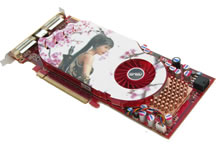Final Thoughts
From what turned out to be the 'unofficial' official release date, the Radeon HD 4850 has been out for less than a week, but retail availability is very good already. At just $200 there can be no question regarding the value offered by the Radeon HD 4850.
As has been the case many times in the past, Nvidia has quickly taken action and moved to neutralize the latest Radeon threat with a rather simple solution. The GeForce 9800 GTX+ may seem like a bit of a band-aid, but it works quite well, and although we are yet to see any retail examples, this new graphics card is said to cost between $200-$229, allowing it to target the Radeon HD 4850 directly.
Performance-wise there was very little difference between these two graphics cards though the Radeon HD 4850 appeared to get the better of the exchanges. It is amazing to find that for roughly $200 there are now two graphics cards capable of going toe to toe with the Radeon HD 3870 X2 in most games. That kind of performance at this price point will certainly place a smile on gamers faces everywhere.
The single-slot heatsink seemed to be the only real weakness of the Radeon HD 4850, and although it is very quiet when operating, the idle and load temperatures are appalling. We proved how temperatures could go way down with a proper cooler, so this is something that board makers such as Asus are going to need to address, and quickly.
The compact design of the Radeon HD 4850 makes it very suitable for Crossfire configurations, though with such poor stock cooling we could not imagine placing two of these cards in the same case. Nevertheless, at $200 each, a pair of Radeon HD 4850 graphics cards in Crossfire mode could pose quite a threat to the mighty GeForce 9800 GX2.
For those of you disappointed that we did not include any overclocking results, we assure you that we did attempt to squeeze some extra performance out of this graphics card. Unfortunately overclocking our Asus Radeon HD 4850 did not go well, as we were barely able to raise the core above the default specification. The core would not even budge 20MHz, and the memory didn't fare much better. Clearly the high temperatures were having an adverse affect.
With the Thermaltake DuOrb in place the overclocking performance improved slightly, at 680MHz for the core and 2080MHz for the memory frequency. Even so, the performance was only marginally improved.
Overall the Radeon HD 4850 has proven to be a real winner, and possibly one the best $200 graphics cards we have ever reviewed. The power consumption levels are excellent, performance was amazing, and hopefully with some decent cooling the overclocking will improve as well. In a sense, the Radeon HD 4850 has also created the GeForce 9800 GTX+, which is shaping up to be another excellent mid-range graphics card. The consumer is the real winner here, and it would seem like a perfect time to upgrade if you are in the market for a graphics card in this price range.
